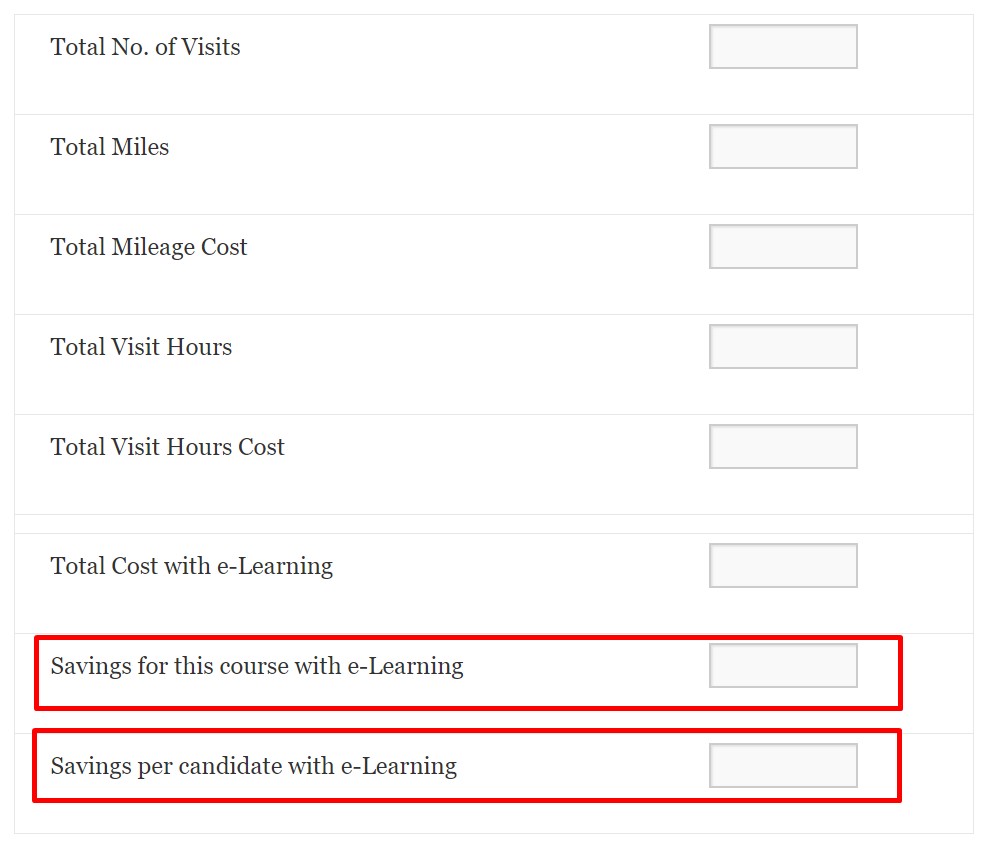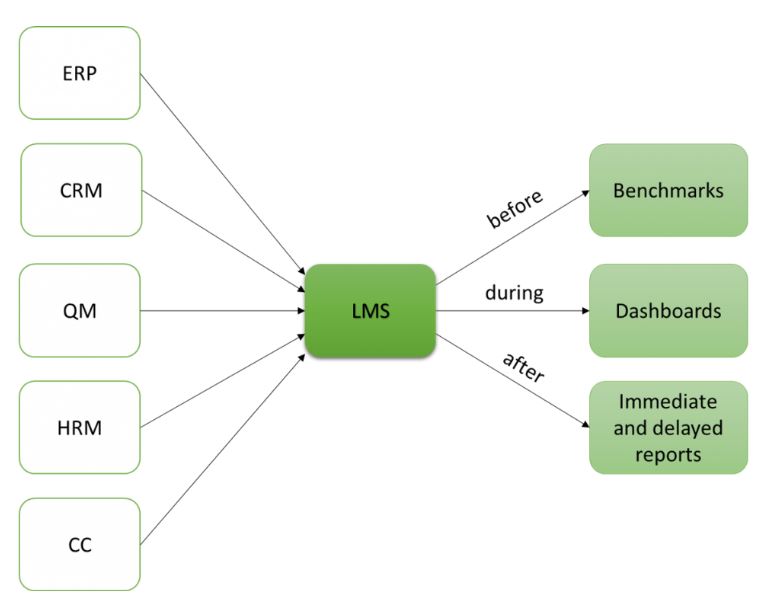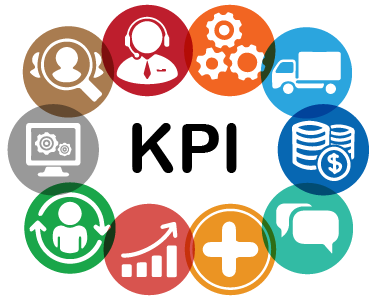“What’s the ROI of your mother?” enquired Gary Vaynerchuk when someone asked him about the return on investment of social media marketing.
Gary has a point here. Not everything may or should be quantified. Some things bring non-monetary value that is far greater than money. For instance, if your safety training leads to fewer accidents, it can potentially result in a saved human life. Now, that is invaluable!
However, when it comes to corporate training programs, sometimes you do need to show the numbers, especially if you want a bigger budget.
And it is only natural that your boss will want to know how much money the company will get in return for eLearning investments. Even more importantly, you need to know what that number turns out to be in reality, after the course is completed.
Virtually every business project that requires a significant investment has to undergo an ROI evaluation, so why does L&D have to be different?
In this article, we'll explore how to calculate the return on investment (ROI) of eLearning. We'll cover what eLearning ROI is, when to calculate it, and how to do it. Additionally, we'll discuss the benefits of calculating eLearning ROI, as well as how to set up your LMS to automate the process. Finally, we'll provide tips on how to apply this knowledge in your organization. With our help, you'll be able to confidently demonstrate the value of your eLearning programs to your boss.
What is eLearning ROI?
Let’s first agree on what it is not.
When researching for this article, I found a number of posts implying that eLearning ROI is everything you manage to save when transitioning from offline training to eLearning.

In reality, eLearning ROI evaluation has nothing to do with the previous ways you’ve conducted training and how much you can save by doing it online.
Return on Investment of eLearning is a net payoff generated by a particular online training program.
So it is the monetary amount of value a particular course has generated minus how much it costs. Obviously, the number has to be positive to consider a project successful.
When to Do It?
The short answer is: you need to calculate ROI twice, before and after the course in question.
ROI evaluation is often thought of as something you do at the end. However, this approach will trap you into a situation where you won’t know what to measure and how to measure it, while all the money is spent in the background.
#1. Firstly, you need to know what success looks like for your course, before it starts. Therefore, it is best to define the KPIs right from the start and decide on how much they should change as a result of the course.
From there, you can already calculate the projected ROI. So, if you see that it is going to be negative right from the start, why bother investing in it?
#2. Secondly, we all know that reality usually deviates from our plans, so it will be useful to know the actual change in the KPIs caused by your course. And, you’ll also need to know how much you’ve actually spent on this course and compare those numbers to get the real ROI.
How to Calculate eLearning ROI?
The formula is quite simple:

‘Benefits’ stands for the monetary value generated by a course and ‘Costs’ are all the expenses incurred in the development and implementation of this course.
You can consider an investment successful when its benefits are significantly higher than the incurred costs.
But don’t let yourself be fooled by the simplicity of this idea. While it is relatively easy to estimate the costs associated with a particular course, it can be very challenging to single out and estimate the benefits derived from it.
To better explain, we’ll give an eLearning ROI calculation example. In this example, Fred, the training manager, has to calculate the ROI of a Product Training Course that he needs to develop for the sales team.
Costs
The costs of eLearning course development and implementation include (and are not limited to) the following:
- Content creation/purchase: Are you going to buy content for your course, outsource content creation or do it yourself in-house? Whichever method you choose, there will be costs involved. For instance, if you are buying content, then it will be the price you pay plus any hours you spend on customizing and adapting this content to your course. So it will be ‘content price’ + (hours spent on customization * your hourly rate).
- Software purchase/development: Do you need to purchase or develop any software to create and run your course? If you don’t already have an LMS, perhaps you need to buy or build one. This cost should also be included in the calculation.
- Project management: Regardless of how much you’ll do yourself and how much you’ll outsource, you will need to plan and coordinate everything. This also means a lot of time spent in spreadsheets, messengers, and emails. Time is money, so these hours should also be reflected in the costs.
- Discussion and revision: To launch a course, you’ll need to involve your management and some experts. Both you and they will spend time discussing what’s expected of the course. Then, you’ll probably need to check back in on the process and discuss the results, afterward. All these hours should also be accounted for ((expert time * hourly rate)+(your time * your rate)).
- Lost production time: Many people also forget that the time trainees spend in training is usually the time taken from their work (except with the type of training they can do at home). This is called lost production time and is calculated by multiplying the number of employees taking the course by the number of hours it takes to complete it times their hourly rates.
Now, let’s go back to Fred’s example and see what costs go into the development and implementation of his Product Training course.
|
Content creation/purchase |
For this course, Fred has to create the content in-house. This will involve both the time of L&D professionals, as well as the product manager:
|
|
Software purchase/development |
The company already has an LMS in place and conducts a number of courses in it. To allocate the LMS costs to this course, we simply divide the costs by the total number of courses. $3,000 LMS total cost / 30 courses = $100 |
|
Project management |
Since Fred is responsible for the course development, he will coordinate with everyone involved in it. 10 hours of management and coordination time * $35 = $350 |
|
Discussion and revision |
The main stakeholder of this course is the Director of Sales, so he participates in the planning and implementation. 3 hours with the Director of Sales * $80 = $240 |
|
Lost production time |
3 hours to complete the course * 10 sales representatives * $30 = $900 |
|
Total: |
$2,227 |
This is a simplified example of what the eLearning cost estimation may look like. We’ve used hypothetical numbers just to give you an idea.
Benefits
In the pre-evaluation phase, you basically decide on what outcomes are expected of your course. It is best NOT to make them up yourself, but rather spend the necessary time discussing goals with the stakeholders. Otherwise, you might end up working hard for something no one cares about.
The process of projecting the benefits will look like this:
- Identify the KPIs
- Agree on how much you want them to change (%)
- Calculate how much monetary gain this change will bring
In the post-evaluation phase, when everyone completes the program, you will need to check if your expectations were met. This depends on the program, but it is likely that you’ll have to wait for the results to manifest themselves. Your learners have to go full cycle: gain the new knowledge/skills, apply them, and get the results. This can take from a couple of months to a year (sometimes even more). Together with the stakeholders, you need to decide on the appropriate time for the evaluation.
In addition to that, you’d need to also make sure that the benefits you are attributing to the course are really caused by it. For instance, can you really say that the increase in sales is only the result of the training you conducted? What about seasonality? What about marketing activities? It can be tricky and sometimes impossible to isolate the results, but it is well worth giving it a try.
Here are the post-evaluation steps:
- Calculate the change in the KPIs
- Calculate how much monetary value it brought
- Isolate the effects of the program to make sure the change is caused by the program, not some other circumstances
Let’s see what benefits can be expected from Fred’s Product Training Course. To simplify this calculation, we’ll consider only one KPI - sales volume. And we will look at a period of three months.
| KPI | Projected change (%) | Projected change ($) |
| Sales volume | 20% | $10,000 |
Also, we made sure that, during this period, the marketing department was not planning any extra marketing activities and there was no seasonality (i.e. spikes in demand). Thus, the estimated monetary value of the Product Training course is $10,000. Now that we know the costs and the benefits, we can calculate the ROI: 
If everything goes as planned, this course will have an excellent ROI of 349%. So, it will bring over three times more value compared to what was invested in it.
Set Up Your LMS to Calculate ROI for eLearning Automatically
Most of the off-the-shelf LMS products available on the market are not capable of ROI calculations of an eLearning program. These systems can only scratch the surface of training evaluations by tracking course participation, assessing knowledge, and sometimes the satisfaction of learners with a course. However, they don’t do the most important part of the training evaluation - measuring the impact of eLearning on business. In particular, most canned LMS solutions don’t measure changes in the KPIs and don’t calculate ROI.
That is why L&D professionals who want to perform a complete evaluation of a training project have to do the heavy lifting by themselves with no tools, besides spreadsheets, to help.
We found a way to solve this problem, by developing an LMS that can help you go through the entire process of evaluating a course, including the ROI calculation.
If you already have an LMS, it might be possible to upgrade it with the necessary features to do so (depending on the product you are using). If you don’t, even better — you can develop one with the evaluation features in place.
Here is a brief description of what this work will entail.
To have your LMS track KPIs and calculate ROI for an eLearning course, you’ll need to feed it the necessary data. This requires integrating it with the other information systems your organization uses that contain the data you need. These can be ERP, CRM, HRM, or any other systems that contain the KPIs you need.

Thanks to this integration, your LMS will be regularly importing this data, performing the necessary calculations, and presenting them in the form of dashboards and reports.
Also, having a dashboard means that you will be able to not only calculate ROI before and after the program but also to monitor your course KPIs throughout the entire period. This will allow you to make the necessary changes during the program in case you don’t see the desired improvement in some KPIs.
For instance, if you notice that the close rate is not improving as well as expected, you can send your trainees complementary material on sales closing techniques.
How to Apply This in Your Company
Evaluating the ROI of an eLearning project is one of the best ways to showcase its value. After all, business is about numbers, and this is the language that executives speak. That is why it pays to conduct the ROI evaluation for every eLearning course or, at least, for the most strategically important ones.
And it is best to plan your evaluation right from the start, otherwise, it will be very difficult or even impossible to do it at all. Decide what success should look like and conduct a projected evaluation first. It should give you and your management an idea of how attractive your project is.
Then, once the course is completed by all participants, wait for the actual business results to show up and calculate the real ROI of your course.
This work can be done manually in Excel, or you can equip your LMS to do it automatically or semi-automatically. If you are interested in upgrading your LMS to perform this task or you’d like to build one from scratch, don’t hesitate to contact us for a free consultation.
Get a FREE consultation for your LMS project!
Contact UsRate this article!
Not rated









 Sign in with Google
Sign in with Google
Comments (0)